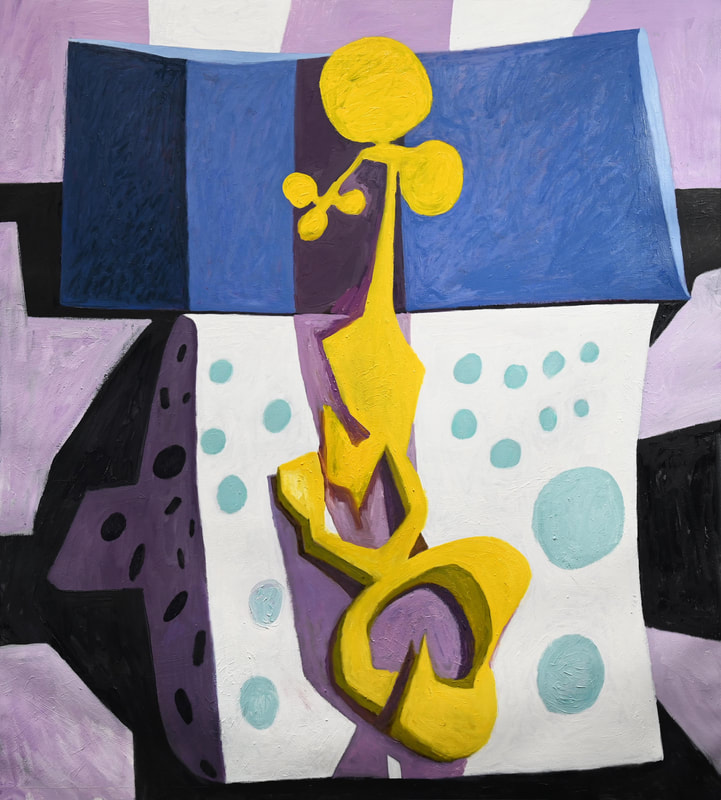 "Gonna Speak to the Crowd" (2021 No.5, state 16), oil on canvas, 64x57⅜ inches, {"I'm gonna spare the defeated — I'm gonna speak to the crowd. I'm gonna spare the defeated, boys, I'm going to speak to the crowd. I am goin' to teach peace to the conquered. I'm gonna tame the proud." - Bob Dylan, "Lonesome Day Blues" (2001)} There are may ways to impact viewers. For a painter, means are few. There is form, composition, and color. Use of these elements is a wide open sea. Looking out upon a wide sea tells little about direction. In other words, a correct direction is not easy to know. Yesterday I did make headway. Judge for yourself. I am very interest in the impactful use of negative space. One of greatest masters of negative space is Andrew Wyeth (see below). Comparisons in Art are difficult; Art's range of content runs the gamut of human emotions. Today I give you a comparison of my drawing from yesterday to a painting by Jean-Michel Basquiat (1960-1988). This is not an easy comparison. To me, it is apt; it represents my struggle to be true to myself. I am drawn to Basquiat's extreme, forceful content, but... I am me and he is he. The one simple and obvious connection I make with this Basquiat painting is its organization. Basquiat slams you into its center panel; he grabs the the viewer with color contrast, as well as formal centering because of content that are complex and patterned shapes. Basquiat painting is a lesson in classical compositional organization. There is no getting around the effectiveness that is centering the viewer's attention through any means possible, which include large forms, strong color, obvious shapes, interesting patterns, and high value contrast. When does simplification become too much? Am I simplifying? Clarity is an act of decisiveness; Simplification is an act of divorce. That which appears simpler is often more complex. Complexity is a measure of profundity. Simplification is a measure of ease. This painting, "Your Decisions Matter", is complex; it is profound, albeit simpler in color scheme and its number and kinds of forms. Mark Rothko understood profundity; he made, to the unobservant eye, seemingly simple paintings. I leave you with a great painting by Mark Rothko. 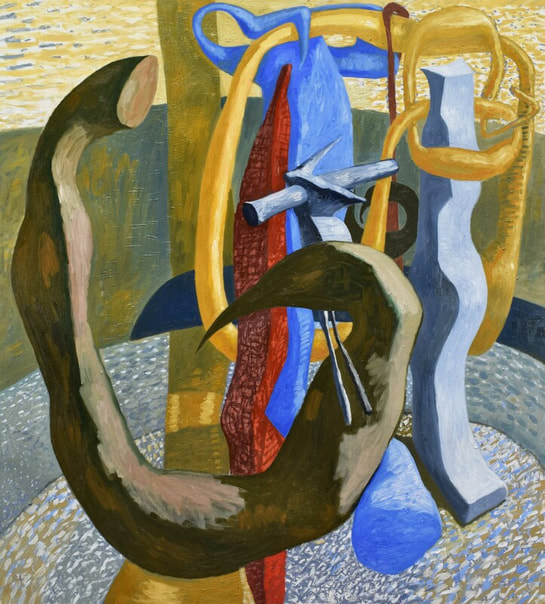 "The Doctrine of Liberty" (2019 No.1, state 7), oil on canvas, 66x59.5 inches {"I believe there is a golden thread which alone gives meaning to the political history of the West, from Marathon to Alamein, from Solon to Winston Churchill and after. This I chose to call the doctrine of liberty under the law." -Anthony Sampson, "The Changing Anatomy of Britain", 1982} The constant back and forth is not second-guessing; It is guessing! Try this! Is that right? Yes! No! Maybe? Yeah, that's it! There is a lot right about both the drawing and the painting I show today. The drawing I call "done." The painting, "The Doctrine of Liberty", requires several more sessions. There are little things in "The Doctrine of Liberty" that bother me. Also, there are big things that bother me. Little things, such as the vertical ochre-colored strand on the left requires more tactile touches in order to better animate its accent. Big things, such as the many value and color relationships that need to be revisited, enhanced so as to bring full power to the entire image — this image is in need of total integration through contrast of values within the overall play of its dominant atmospheric color. And so it goes...
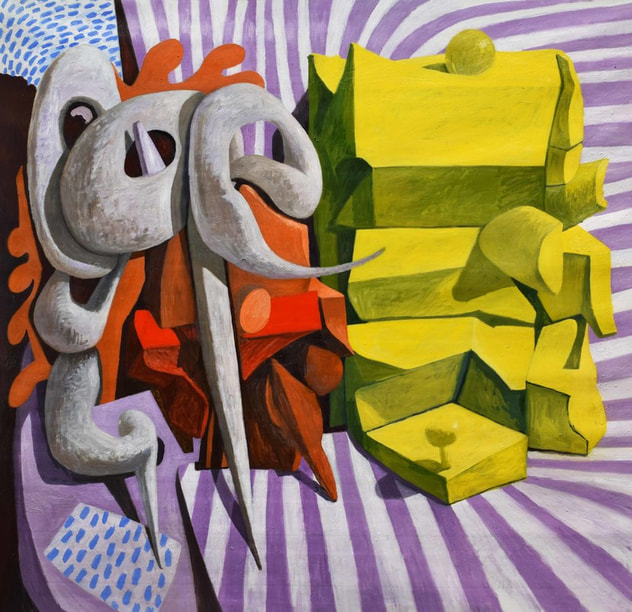 "Burnt Norton" (2018 No.8, state 19), oil on canvas, 63x66 inches {"What might have been is an abstraction; Remaining a perpetual possibility; Only in a world of speculation. What might have been and what has been point to one end, which is always present. Footfalls echo in the memory." -T.S. Eliot, "Burnt Norton"} Jumping into a pit of obstacles, hazards and rewards, is the means to success in sport and in art-making. I found I can act well when challenged by multiple possibilities, some leading to success, some leading to failure. This is problem solving. This is the activity of art-making. This is the activity of sport. Art is engineering and athletics combined. It is physical, and it is mental. Yesterday I leaped into a drawing. For a while I felt lost. I had created many possibilities. For a while it felt confusing and chaotic. There were moments when I thought it best to abandon the drawing. I did not. I was rewarded. I found order within the chaos I had launched. This success by challenge is a great thing; it brings vitality. If the result is success, then trust in one's abilities are bolstered. More challenge will follow. It is a practice I will continue.
Burnt Norton is now very close to complete. The tweak is on! Burnt Norton shall now be completed with minor alterations in color, line, and form. 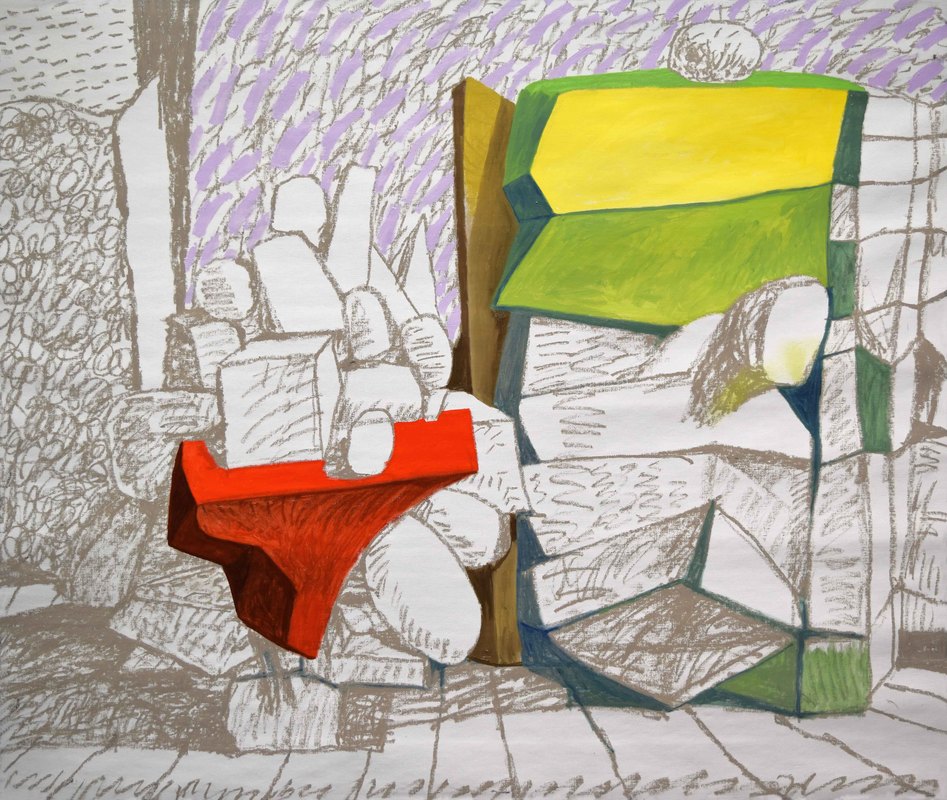 "Burnt Norton" (2018 No.8, state 2), oil on canvas, 55.5x66 inches {"What might have been is an abstraction; Remaining a perpetual possibility; Only in a world of speculation. What might have been and what has been point to one end, which is always present. Footfalls echo in the memory." -T.S. Eliot, "Burnt Norton"} I am all over this. Incredible to me, the creator, this game of making-art is in control. My knowledge can be plucked from everywhere; it surrounds me; my brain is on fire; omnipresent are ideas that can be identified as true. This does not make my task faster, easier. In fact the road just got bumpier; my speed has slowed because there is so much I can do with every mark I make. It is much more than marks. It is composition and form and light and color and repetition and pattern et cetera et cetera. Crazy full of possibilities but also crazy specific with solutions that actually make sense. Solutions that speak truly, speak authentically, are several and few. Finding them is my task.
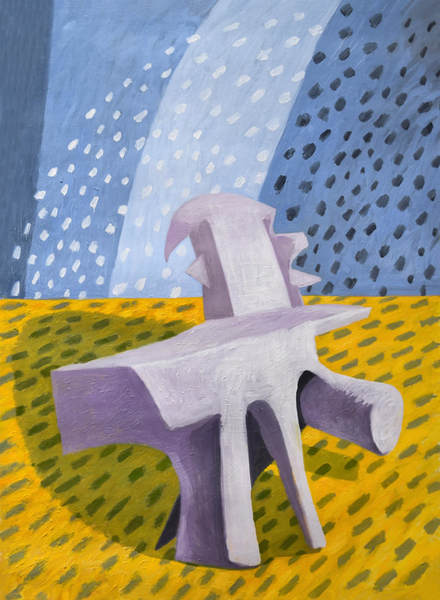 "The Intervening Tick" (2018 No.6, state 6), oil on canvas, 49x33 inches {"Is that where wise men want us to live; in that intervening tick, the tiny slot that occurs after you have spent hours searching downtown for that new club and just before you give up and head back home?" - Billy Collins, "The Present", from "New Ohio Review" 2017}  "Along for the Ride" (2018 No.7, state 1), oil on canvas, 57.5x49.5 inches) {"The fact remains that getting people right is not what living is all about anyway. It's getting them wrong that is living, getting them wrong and wrong and wrong and then, on careful consideration, getting them wrong again. That's how we know we're alive: we're wrong. Maybe the best thing would be to forget being right or wrong about people and just go along for the ride. But if you can do that — well, lucky you." - Philip Roth, "American Pastoral"} The painting, The Intervening Tick, is nearly complete. One more session and it will be done. I have declared Chocorua (2018 No.6) complete. Moving-on is the real news. In 1977 my greatest mentor, Philip Guston, wrote, "So when the 1960s came along I was feeling split, schizophrenic. The war, what was happening in America, the brutality of the world. What kind of man am I, sitting at home, reading magazines, going into a frustrated fury about everything — and then going into my studio to adjust a red to a blue? I thought there must be some way I could do something about it." Guston did do something, the thing an artist can do; Guston made a series of Nixon Drawings. Guston also began making emotion-driven, figurative paintings and drawings. Another Philip has always engaged me. Philip Roth continues to be in my thoughts. I never met Philip Roth, but he was Philip Guston's good friend (see photo, below). In 1978, the year the photo was taken, I was working with Philip Guston. He was my artistic mentor. The two Philips are with me today. In my head I constantly hear Philip Guston's encouraging words. I am reading Philip Roth's writings. The painting I began yesterday is aptly titled from a few lines Roth wrote in his novel, American Pastoral. I am apolitical. I am a pure artist; however I feel the tension in America. Guston must have felt similarly in the 1960s and 1970s. I will continue to go to my studio, adjust my colors, adjust my forms, adjust my compositions, but I cannot help but realize my art is a response to the country and the world in which I live. My art is, I believe, appropriately expressive. There are multifarious ends facing me. One has immediacy. The idea of my mortality and eventual silence is the scariest. My here & now involvement in the End of the Year celebrations, and holidays, is the most demanding. I am a social animal, as well as a spiritual/Intellectual/emotional one. I have family. I have myself. Conflicts arise and overwhelm. Particularly at this time of the year, during this particular Ending. The process is not pretty; perhaps the outcome will be. I am trying to make here & now work well for me and for the people in my life, friends and family. I need generous amounts of time in the studio to feel comfortable with myself. Recently that time has been compromised, reduced by the many preparations to celebrate. Hopefully the celebrations will diminish my conflicts. Best I can expect is my memory will be altered by their success. I hope good memories will not make them too ugly to repeat.
Yesterday I made one drawing in one hour. It is informative. I want to pursue the simplicity of its central form. Soon a painting will come that takes this simplicity as most important. Look at the painting 2017 No.13 in reproduction. It is difficult to see it well in this small form. In the studio this painting sings. It is large, a width of 71 inches (180 cm). There are also problems in reproducing color and value. I made a postcard of 2017 No.13; its image looks cramped in a 5x7 inch format. To get attention, for people to wish to explore my art more fully, more correctly, and in person, I have to get their attention. This will be done best if I make a few works that reproduce well in small formats, such as on a 5x7 inch postcard... always nice to have a new goal. I am always hoping I am good enough to do it all in one fell swoop! Not yesterday! The painting 2017 No.11 is better than the day before, but the yellow creep onto the largest form in the composition requires a pullback. That will happen tomorrow. I think that will be the end of it. This painting does require a few other touches (besides removal of the excess yellow). That should be easy. The difficult work is done.
Yesterday's drawing tests a few new ideas. I still think (as I wrote in yesterday's blog post) I am exploring ideas that may instigate a new painting, which should begin shortly. I am feeling much better about the painting 2017 No.12. So much so that I am just about to declare it finished and move on. This is difficult to do without allowing at least one day for intuitive differences of opinion. I think this is today.
I have been struggling recently with the creep of figuration. It is returning to my work. I struggle because I get conflicted because of my desire to animate compositions based upon the purity inherent in non-representational composition. The force of the principles of art carry a painting when no representation is present. When representation is present a secondary layer of viewer engagement occurs. Purity of form, color, composition, linear movement, and the artifice of light, begin to compete with an involvement that is reference to the real world of figures and representational forms. Yesterday I heard a short interview with Morton Feldman. Feldman was an American composer (1926-1987). He continues to be a major figure in contemporary classical music. Feldman was a pioneer of indeterminate music, a development associated with the experimental New York School of composers, which included John Cage, Christian Wolff, and Earle Brown. Feldman's works are characterized by notational innovations that he developed to create his characteristic sound: rhythms that seem to be free and floating; pitch shadings that seem softly unfocused; a generally quiet and slowly evolving music; recurring asymmetric patterns. His later works, after 1977, also begin to explore extremes of duration. Feldman's music is incredibly fascinating to me. This goes to my self-query in regard to purity in composition. Ultimately, I follow my intuition. I am not going to intellectually rule out figurative and representational if its creep into my art continues. Morton Feldman said he could not help himself, even though critics found his work difficult to comprehend. Mostly, critics found listening to Feldman's music an intellectual chore. |
To read my profile go to MEHRBACH.com.
At MEHRBACH.com you may view many of my paintings and drawings, past and present, and see details about my life and work. Archives
July 2024
|
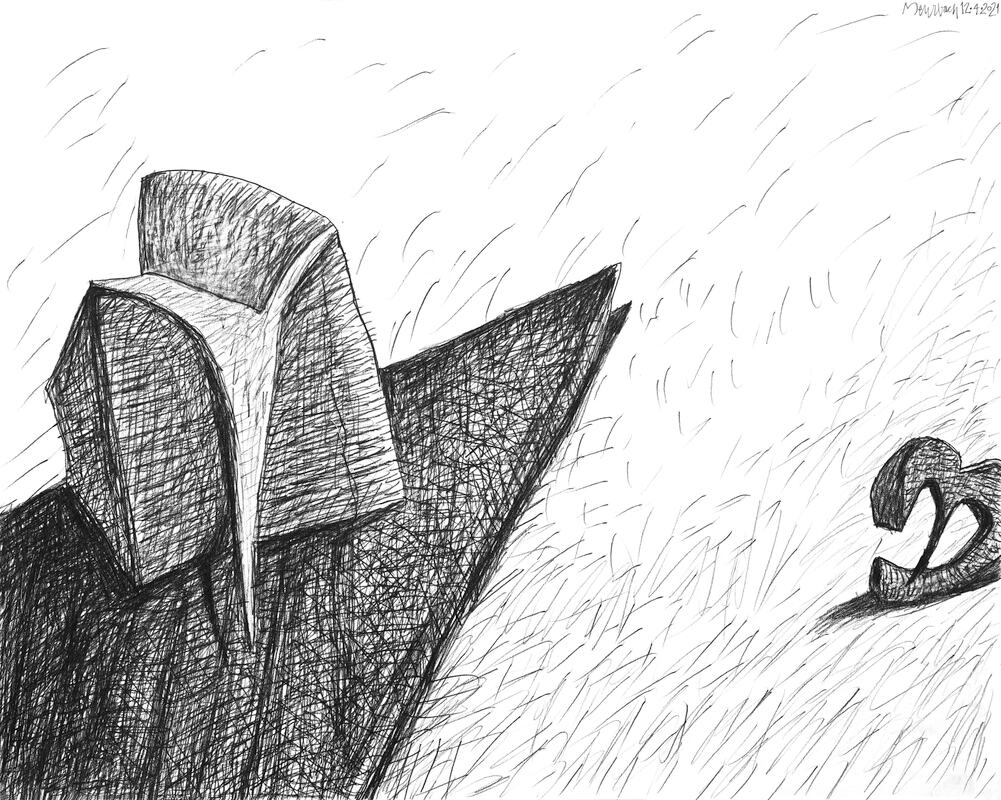

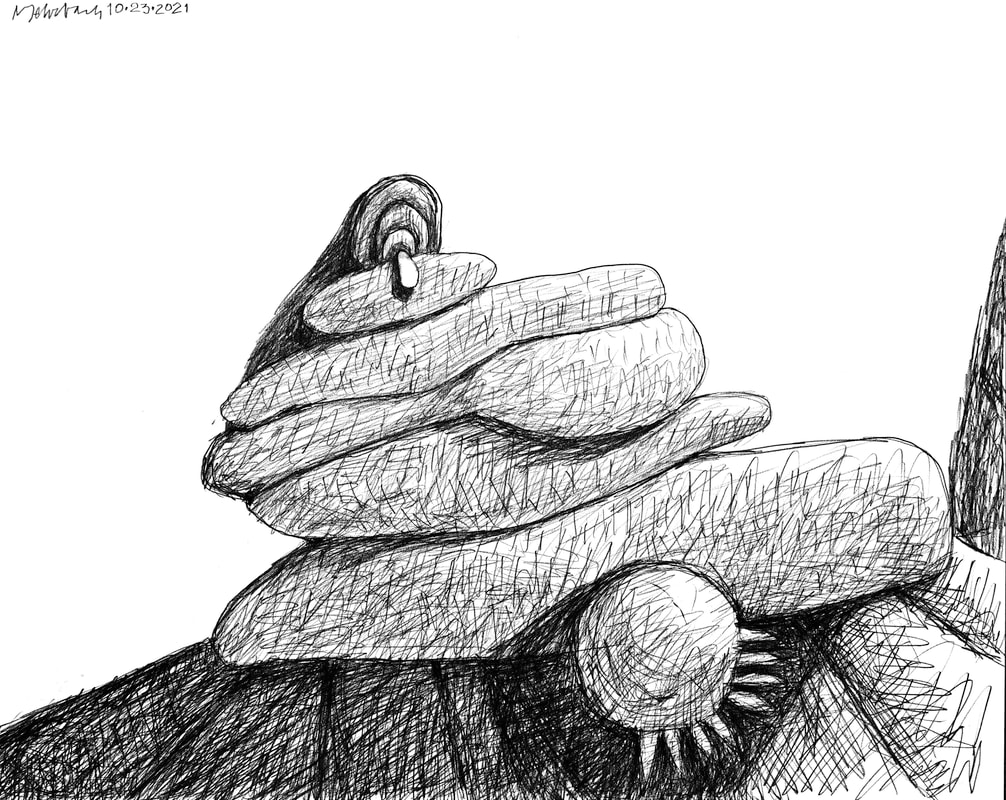

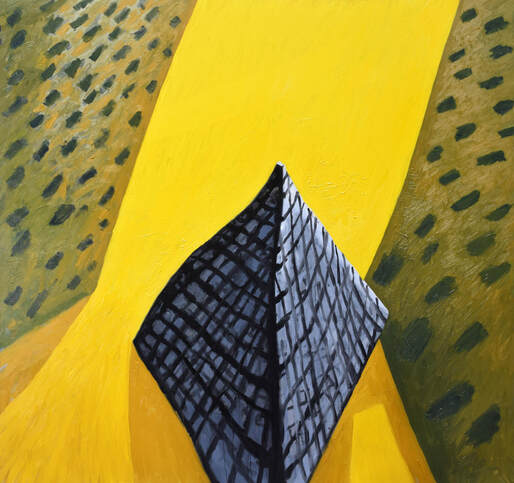
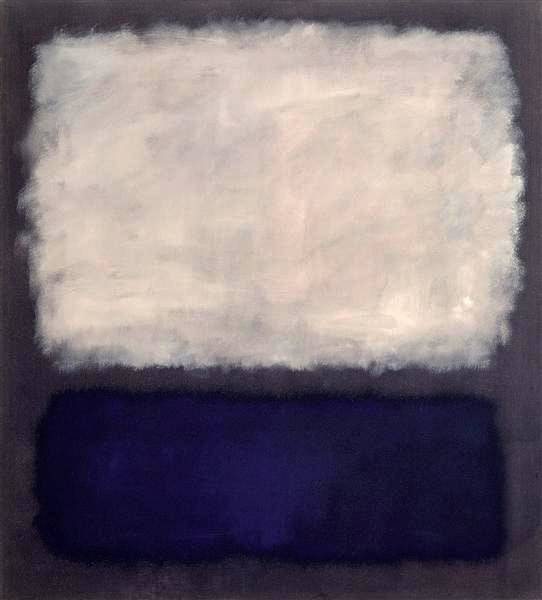

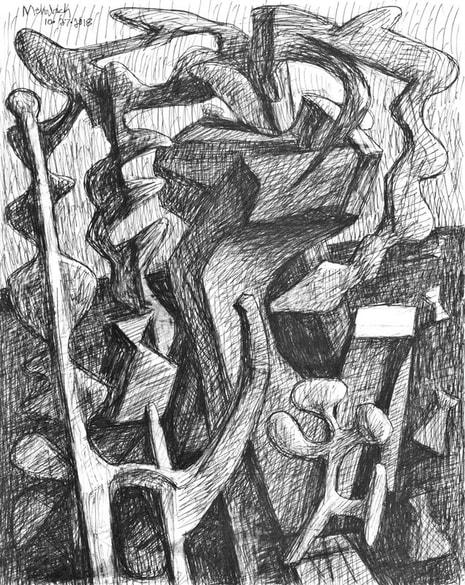
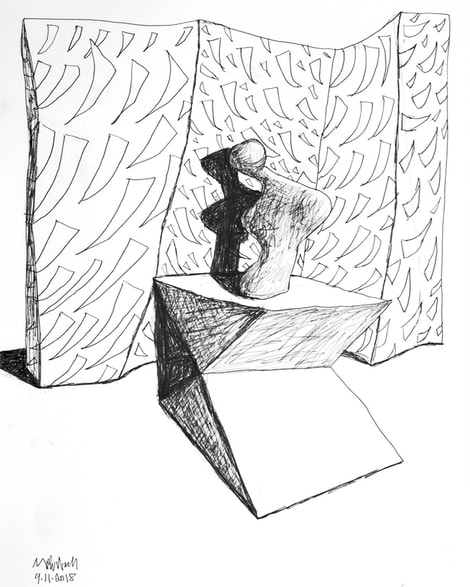

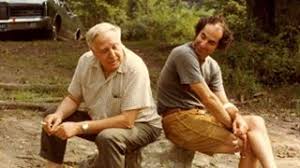

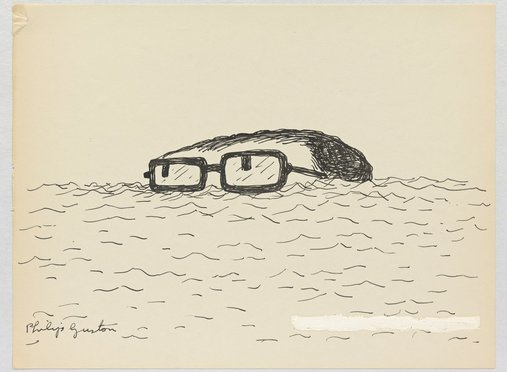
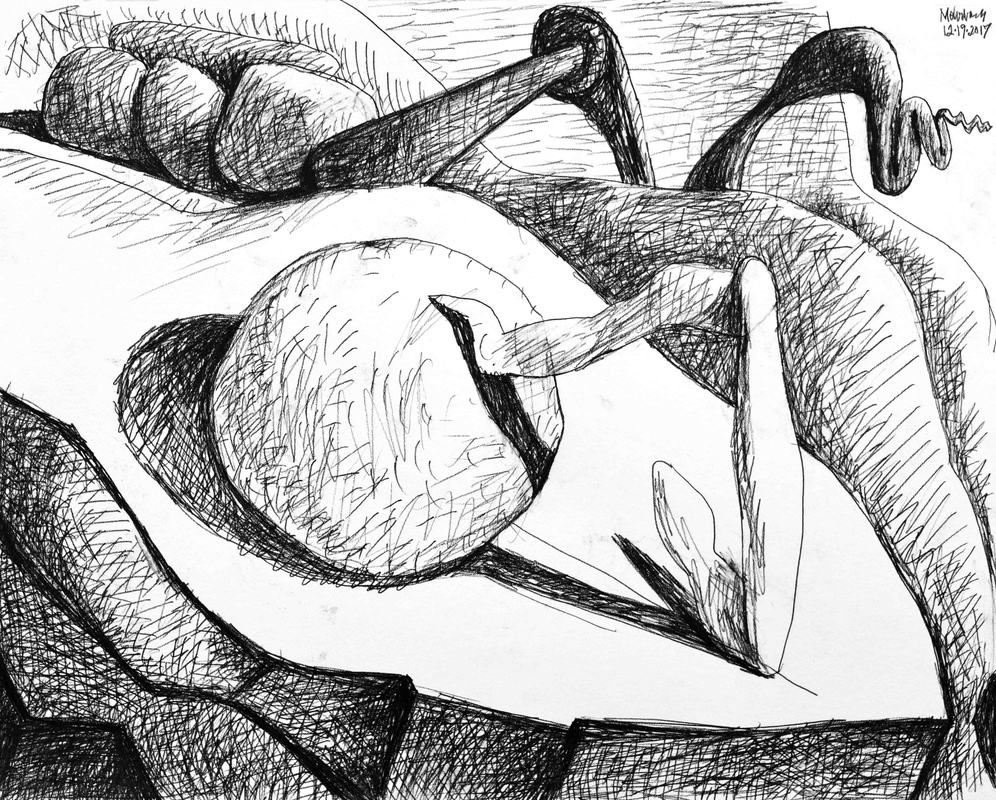
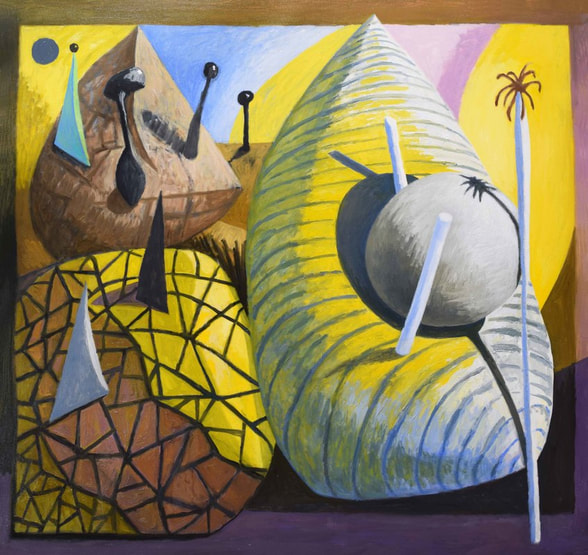
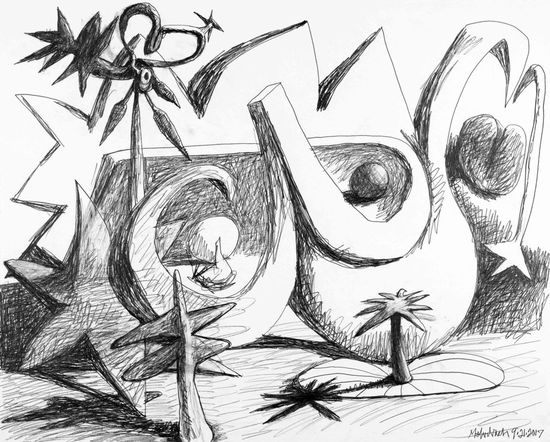
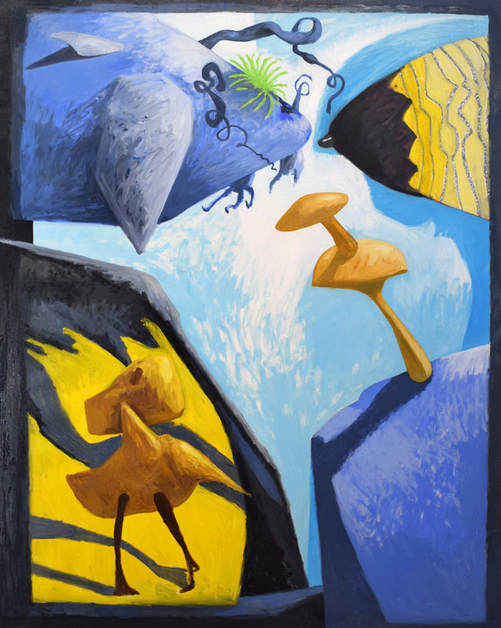
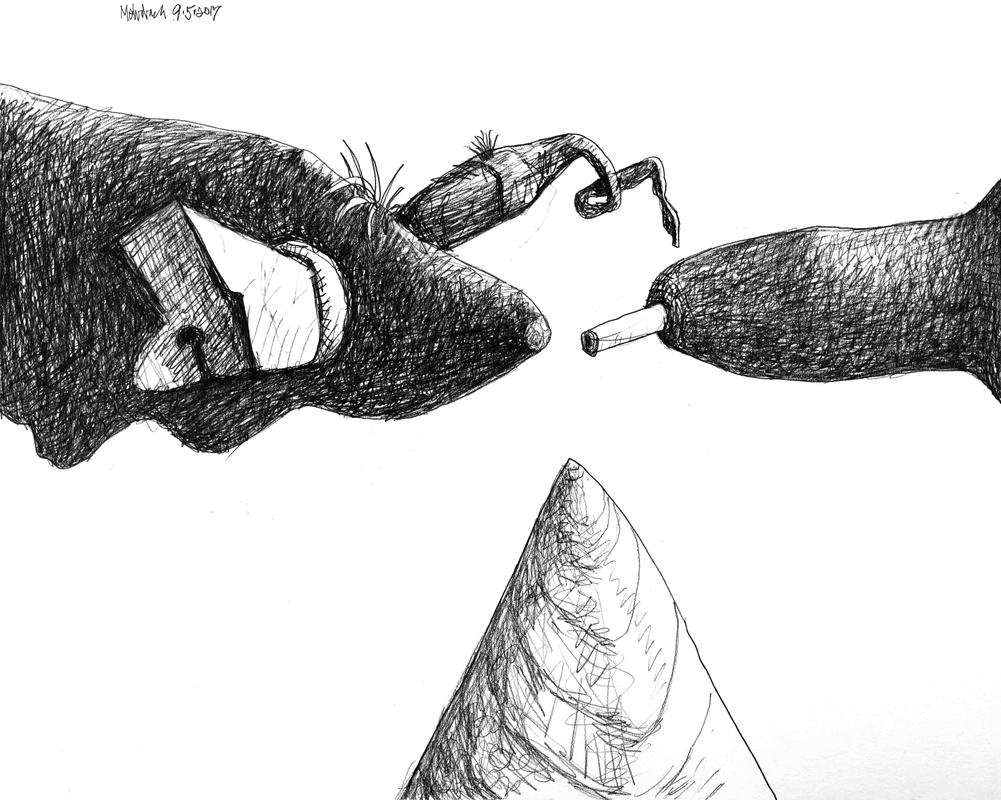
 RSS Feed
RSS Feed